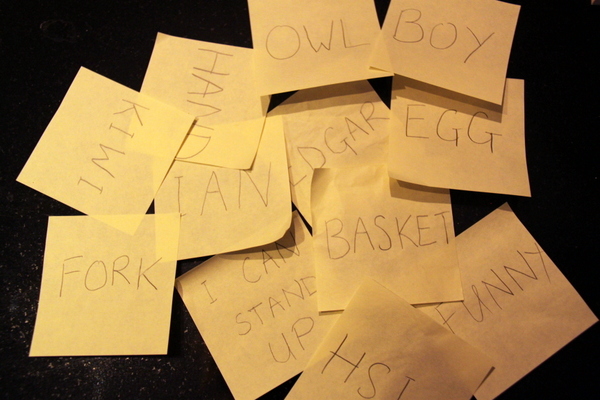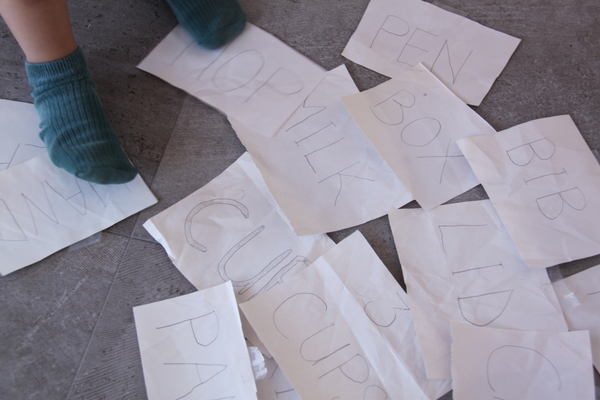The phonics approach has worked really well so far for my 2-year old. Having a limited, fixed set of sounds is reliable and manageable. But now we have pretty much reached the limits of my initial brief. Until recently we stuck to words which are strictly phonetic using only about 25 sounds (that is, one per letter of the alphabet, minus one as she only knows the hard /k/ sound for both C and K). Stand is about as hard as it gets. She was reading 60 or 70 such words without needing any context or clues. I can hardly even think of any more words that we actually use commonly and which fit these rules, and we are getting a teeny bit bored of peg, frog, plum, hand, etc. It’s time to move on.
I have had to think hard about what groups of words would be most logical to move on to. Over the past three weeks we have been adding the following groups of words. I’ve come up with six categories and three sub-categories.
- Double letters which don’t affect the sound:
doll, bell, kiss, egg, fuss, fill, dress,- Also: words ending with CK which phonetically might as well end in KK or CC:
neck, black, pack, back,
- Also: words ending with CK which phonetically might as well end in KK or CC:
- Words ending in Y when it sounds like ‘ee’:
mummy, funny, happy, nappy, silly, bunny; - Words with a vowel+R which gives that lengthening effect, and where the R doesn’t really sound like an R (in my British English):
car, arm, dark, fork, star, start; - Words where the vowels vary slightly from my initial strict phonics rules:
open, put, full, bag;- Certain diphthongs:
owl, toy, boy, way; - Words containing the schwa sound:
basket, lemon, melon;
- Certain diphthongs:
- Very short words which are written strangely:
I, is; - Words with ‘sh’:
fish, shop, shorts, flash, splash, push.
I didn’t follow a specific order as I think they are fairly equal in complexity (save the first which seems easiest). I just let myself be guided by her interests. Some types can be taught as rhyming words which of course adds to the fun. Once you combine all these patterns the vocabulary becomes vast. Making sentences becomes much easier. We’ve also been writing menus (egg and melon, anyone?) and labelling body parts and clothes on life-size drawings of people chalked on the terrace.
Just now she was talking about un singe with her dad, so I wrote MONKEY on the edge of a drawing. From the other side of the paper she read it upside down in a flash.
We still work our way around confusing words, so the girl in a dress wears socks and sandals instead of shoes, which could easily be confused with shows, but arms can have fingers and elbows since halfway through the word the reader has already guessed the meaning – just as we adults do when reading. Needless to say none of our chalk ladies have tights yet.
Next up will be ‘ch’ for chin, ‘oo’ as in moon, and soon enough we’ll have to include long vowels (e.g. face). But by that time she will be “sight-reading” some words, and even getting context from the sentence, instead of deciphering each word entirely separately.
To bridge the gap between the cat-dog phase and the famed irregularity and randomness of English spelling, we make sure to acknowledge that things are not always written exactly as they are said. She’ll need to grasp that pretty well in order to read even very basic French, anyway. More on that can of worms later.

